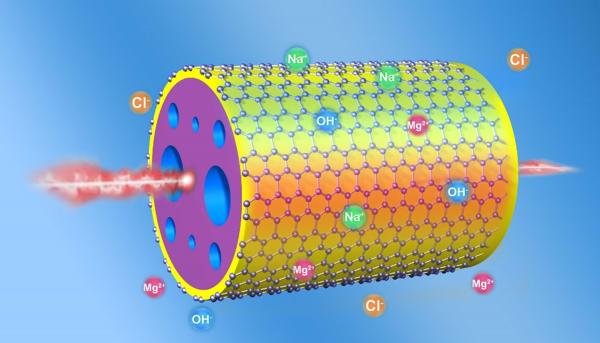Over the past few decades, optical fibers have been widely applied to telecommunication, imaging, lasers, and sensing. Optical fibers constitute a platform to excite surface plasmon resonance (SPR) when plasmonic materials are coated on the surface of the fiber core, thus satisfying the need for miniaturization and integration. In particular, photonic crystal fiber (PCF) sensors based on SPR (PCF-SPR) have drawn much attention due to the flexibility of their structure. A PCF is essentially a microstructured optical fiber consisting of a silica core surrounded by a periodic lattice of air holes along the length of the fiber. PCFs are regarded as a desirable platform to excite surface plasmon resonance (SPR) because of easy realization of phase matching conditions between the fundamental core mode and the plasmonic mode, which is the most unique advantage over conventional optical fiber SPR sensors.
In recent years, PCF-SPR sensors have become a hot research area in the optical sensing field, and various types of PCF-SPR sensors have been proposed and investigated theoretically to cater to a myriad of applications ranging from biology to chemistry monitoring. Compared with conventional single-mode fibers, PCF has become a flourishing research field for SPR because of the outstanding features such as single-mode operation over an extended range of operating wavelengths, large mode area as well as overall controllable dispersion. Based on the physical mechanisms that govern enhanced coupling between the core-guided mode and the plasmonic mode, most of the research efforts have focused on the following aspects: (1) broadening the RI detection range, (2) adjusting the resonance wavelength, and (3) increasing the sensing sensitivity.

Fig. 1 Schematic diagram of photonic crystal fiber surface plasmon resonance sensing structure
The research group led by Prof. Chao Liu from Northeast Petroleum University summarized the refractive index sensors comprising PCF-SPR effect and the challenges and future perspectives are outlined. This overview paper is published in Chinese Optics Letters, Volume 19, No. 10 2021 (C. Liu, et al., Overview of refractive index sensors comprising photonic crystal fibers based on the surface plasmon resonance effect [Invited]).
The current status of PCF sensors based on SPR is summarized in this work. The physical principles governing SPRs are discussed, and the important simulation methods for PCF-SPR sensors are summarized. The aims of PCF-SPR simulation include the process of selecting the optimal design and using models to predict the sensing performance for each structural combination. Many plasmonic PCF-SPR structures have been simulated by the finite element method (FEM), which is the most common method to compute the optical properties of PCF-SPR sensors. Based on FEM, PCF-SPR sensors with various structures have been designed and evaluated numerically, for instance, side-polished, dual-core cladding with open rings, and dual-beam, liquid-filled cladding coated by plasmonic nanomaterials. Moreover, this review addresses the desirable attributes of PCF-SPR sensors including wide RI detection ranges, controllable resonance wavelengths, and high sensitivity. Different PCF-SPR sensors with unique structures and their sensing characteristics are also discussed. The fabrication and the comparison of performances are also illustrated, and the challenges and future perspectives are outlined. Fabrication of PCF-SPR sensors involves two aspects of manufacturing PCF and producing plasmonic nanomaterials. Advances pertaining to the manufacturing and post-processing technology of optical fibers have spurred substantial development in techniques such as extrusion, casting/molding, mechanical drilling, and stack-and-draw. PCF sensors based on the SPR effect will be used to detect temperature, strain, magnetic field, human IgG, and cell concentrations, exhibiting great application potentials.
Theoretical calculations show that performances of the sensors remarkably depend on parameters such as the air hole size, air hole pitch, plasmonic material thickness, and fiber core diameters. Although there has been tremendous progress in theoretical simulation and experimental fabrication of PCF-SPR sensors, not all aspects of PCF-SPR sensors are well understood. There are a few key barriers that are preventing more widespread implementation. The biggest obstacle is concerned with the fabrication of PCF-SPR sensors, especially deposition of high quality plasmonic materials on the air hole inner walls inside the PCFs. In addition, although plasmonic materials can be filled in the air hole channels in the PCFs by high-pressure chemical deposition, high temperature pressure injection, and pressure-assisted splicing techniques, these techniques are quite complex from the manufacturing perspective, and more efforts are needed to develop simple and reliable fabrication techniques for plasmonic materials.
The overview of refractive index sensors comprising PCF-SPR effect. Among the different structures, the D-shaped PCFs have large potential from the viewpoint of fabrication. The D-shaped PCF-SPR sensors possess the advantage of relatively easy side polishing, and plasmonic materials can be fabricated by physical deposition techniques such as RF/DC magnetron sputtering, electron beam evaporation, and chemical synthesis. The sensitive metal layer can be coated adjacent to the core of the PCFs to promote the interactions with the analyte and enhance the sensing performance. In addition, alternative plasmonic materials like graphene, MoS2, and other 2D materials with unique physical properties are being explored and expected to improve PCF-SPR sensors in specific applications. The field of PCF-SPR sensing is vibrant, and a better fundamental understanding and continuous technological advances will expedite commercial development.


